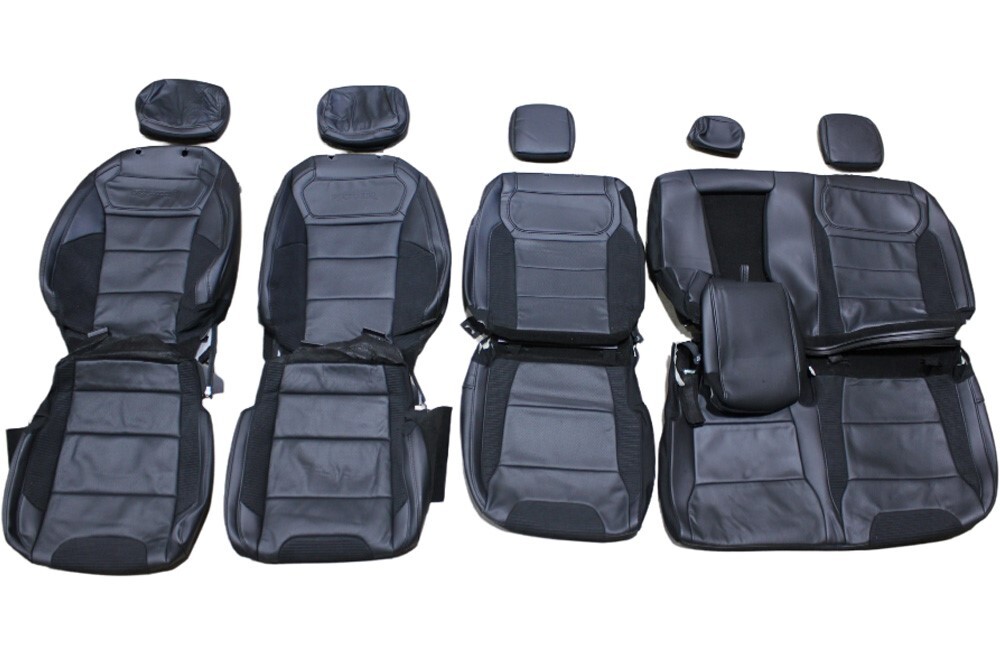What are the different types of automotive silicone?
Automotive silicone encompasses a diverse range of materials, each engineered to meet specific functional requirements in vehicle design. These types vary in composition, texture, and application, reflecting the material’s versatility across mechanical, electrical, and interior systems.
1. Silicone Rubber Components
Silicone rubber is one of the most widely used forms in automotive engineering, valued for its exceptional elasticity and thermal resistance. It is commonly processed into seals, gaskets, O-rings, and weatherstripping. For example, in engine compartments, silicone rubber gaskets create airtight seals between engine components, preventing leaks of oil, coolant, or exhaust gases while withstanding temperatures up to 200°C. These seals are critical in high-performance vehicles and electric motors, where reliability under extreme conditions is non-negotiable. Additionally, silicone rubber weatherstripping is used around car doors and windows to block water, dust, and noise, enhancing cabin comfort and durability. Unlike traditional rubber, silicone rubber does not harden or crack over time, making it ideal for long-lasting automotive applications.
Silicone rubber is one of the most widely used forms in automotive engineering, valued for its exceptional elasticity and thermal resistance. It is commonly processed into seals, gaskets, O-rings, and weatherstripping. For example, in engine compartments, silicone rubber gaskets create airtight seals between engine components, preventing leaks of oil, coolant, or exhaust gases while withstanding temperatures up to 200°C. These seals are critical in high-performance vehicles and electric motors, where reliability under extreme conditions is non-negotiable. Additionally, silicone rubber weatherstripping is used around car doors and windows to block water, dust, and noise, enhancing cabin comfort and durability. Unlike traditional rubber, silicone rubber does not harden or crack over time, making it ideal for long-lasting automotive applications.
2. Silicone Sealants and Adhesives
Silicone-based sealants and adhesives are essential for bonding and protecting various vehicle components. These materials are often used in bodywork, windshield installations, and electrical systems. For instance, in automotive assembly, silicone sealants are applied to joints and seams to prevent corrosion and ensure structural integrity. They are also used to secure electronic components, such as sensors and circuit boards, by providing a shock-absorbing and waterproof barrier. One notable type is RTV (room temperature vulcanizing) silicone, which cures at ambient temperatures and is widely used for on-site repairs due to its ease of application. RTV silicone can seal leaks in exhaust systems or bond trim pieces, offering flexibility and durability that traditional adhesives cannot match.
Silicone-based sealants and adhesives are essential for bonding and protecting various vehicle components. These materials are often used in bodywork, windshield installations, and electrical systems. For instance, in automotive assembly, silicone sealants are applied to joints and seams to prevent corrosion and ensure structural integrity. They are also used to secure electronic components, such as sensors and circuit boards, by providing a shock-absorbing and waterproof barrier. One notable type is RTV (room temperature vulcanizing) silicone, which cures at ambient temperatures and is widely used for on-site repairs due to its ease of application. RTV silicone can seal leaks in exhaust systems or bond trim pieces, offering flexibility and durability that traditional adhesives cannot match.
3. Silicone Coatings and Insulators
Silicone coatings are applied to materials to enhance their performance in specific environments. In automotive electronics, silicone-based insulating coatings are used on wiring harnesses and connectors to protect against moisture, chemicals, and mechanical stress. These coatings ensure the reliability of electrical systems, particularly in hybrid and electric vehicles where short circuits pose a significant risk. Additionally, silicone-based heat-resistant coatings are applied to engine components and exhaust systems to prevent heat transfer to surrounding parts, reducing the risk of fires or material degradation. For example, a silicone coating on a turbocharger’s heat shield can withstand constant exposure to high temperatures while maintaining its insulating properties.
Silicone coatings are applied to materials to enhance their performance in specific environments. In automotive electronics, silicone-based insulating coatings are used on wiring harnesses and connectors to protect against moisture, chemicals, and mechanical stress. These coatings ensure the reliability of electrical systems, particularly in hybrid and electric vehicles where short circuits pose a significant risk. Additionally, silicone-based heat-resistant coatings are applied to engine components and exhaust systems to prevent heat transfer to surrounding parts, reducing the risk of fires or material degradation. For example, a silicone coating on a turbocharger’s heat shield can withstand constant exposure to high temperatures while maintaining its insulating properties.
4. Silicone Leather and Upholstery Materials
Silicone leather, a synthetic alternative to animal leather, has gained popularity in automotive interiors for its durability and eco-friendly attributes. Made by coating a fabric base with a layer of silicone polymer, it mimics the texture of genuine leather while offering superior resistance to stains, scratches, and UV fading. Silicone leather is flexible and breathable (especially when perforated), making it suitable for car seats, steering wheel covers, and dashboard trim. Its hypoallergenic properties and ease of cleaning (spills can be wiped away with a damp cloth) make it ideal for family vehicles and luxury EVs alike. Brands like Tesla and Mercedes-Benz have incorporated silicone leather into their models to align with sustainability goals, as it reduces reliance on animal products and minimizes VOC emissions during production.
Silicone leather, a synthetic alternative to animal leather, has gained popularity in automotive interiors for its durability and eco-friendly attributes. Made by coating a fabric base with a layer of silicone polymer, it mimics the texture of genuine leather while offering superior resistance to stains, scratches, and UV fading. Silicone leather is flexible and breathable (especially when perforated), making it suitable for car seats, steering wheel covers, and dashboard trim. Its hypoallergenic properties and ease of cleaning (spills can be wiped away with a damp cloth) make it ideal for family vehicles and luxury EVs alike. Brands like Tesla and Mercedes-Benz have incorporated silicone leather into their models to align with sustainability goals, as it reduces reliance on animal products and minimizes VOC emissions during production.
5. Silicone-Based Thermal Interface Materials
In advanced automotive technologies, such as electric vehicles and autonomous driving systems, silicone-based thermal interface materials (TIMs) play a crucial role in heat management. These materials, including thermal pastes, pads, and gap fillers, are used to transfer heat from high-power components like batteries, inverters, and microprocessors to cooling systems. For example, in an EV’s battery pack, silicone TIMs ensure even heat distribution, preventing hotspots that could lead to battery degradation or thermal runaway. Their ability to conform to irregular surfaces and maintain thermal conductivity over time makes them indispensable in high-performance and safety-critical applications.
In advanced automotive technologies, such as electric vehicles and autonomous driving systems, silicone-based thermal interface materials (TIMs) play a crucial role in heat management. These materials, including thermal pastes, pads, and gap fillers, are used to transfer heat from high-power components like batteries, inverters, and microprocessors to cooling systems. For example, in an EV’s battery pack, silicone TIMs ensure even heat distribution, preventing hotspots that could lead to battery degradation or thermal runaway. Their ability to conform to irregular surfaces and maintain thermal conductivity over time makes them indispensable in high-performance and safety-critical applications.
6. Silicone Elastomers for NVH Reduction
Noise, vibration, and harshness (NVH) reduction is a key focus in modern vehicle design, and silicone elastomers are increasingly used to address these challenges. Silicone-based damping materials are integrated into vehicle frames, suspension systems, and interior panels to absorb shocks and reduce unwanted noise. For instance, silicone bushings in suspension systems provide a balance between flexibility and stability, improving ride comfort while minimizing road vibrations. In luxury vehicles, silicone elastomers are used in seat cushions and headrests to enhance ergonomic support and reduce fatigue during long drives.
Noise, vibration, and harshness (NVH) reduction is a key focus in modern vehicle design, and silicone elastomers are increasingly used to address these challenges. Silicone-based damping materials are integrated into vehicle frames, suspension systems, and interior panels to absorb shocks and reduce unwanted noise. For instance, silicone bushings in suspension systems provide a balance between flexibility and stability, improving ride comfort while minimizing road vibrations. In luxury vehicles, silicone elastomers are used in seat cushions and headrests to enhance ergonomic support and reduce fatigue during long drives.
In summary, the diverse types of automotive silicone highlight the material’s adaptability to the industry’s evolving needs. From high-temperature mechanical components to eco-friendly interior materials, silicone continues to drive innovation in automotive engineering, balancing performance, durability, and sustainability.







